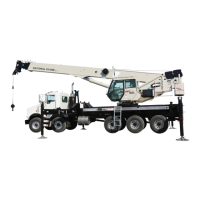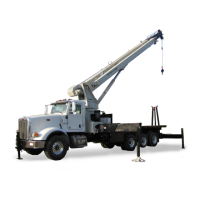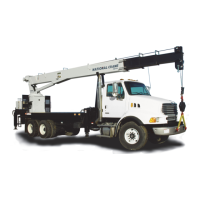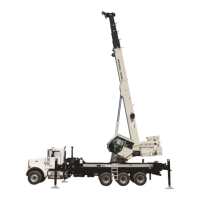7-2 3-29-2018 Control # 610-00
LUBRICATION NBT40-1 SERIES OPERATOR MANUAL
products. Where questions arise, contact your National
Crane Distributor or Manitowoc Crane Care.
Arctic Conditions Below -9°C (15°F)
In general, petroleum based fluids developed especially for
low temperature service may be used with satisfactory
results. However, certain fluids, such as halogenated
hydrocarbons, nitro hydrocarbons, and phosphate ester
hydraulic fluids, might not be compatible with hydraulic
system seals and wear bands. If you are in doubt about the
suitability of a specific fluid, check with your authorized
National Cranes distributor or Manitowoc Crane Care.
NOTE: All fluids and lubricants may be purchased by
contacting the Manitowoc Crane Care Parts
Department.
Regardless of temperature and oil viscosity, always use
suitable startup procedures to ensure adequate lubrication
during system warm-up.
Chassis Grease
Lubricating grease of proper consistency is to be applied
periodically at relatively frequent intervals with grease guns
through grease fittings. Minimum apparent viscosity of
300 SUS (Saybolt Universal Seconds) at 38°C (100°F)
is recommended.
Low Temperature Grease
This special grease for low temperature remains plastic at
-51° C (-60° F) with melting point of 138°C (280°F). The
grease is a heavy duty extreme pressure type lubricant
(Lubricate Low Temp or equal).
Extreme Pressure Multipurpose Gear
Lubricant (EPGL)
This gear lubricant is compounded to achieve high load
carrying capacity and meet the requirements of either API-
GL-5 or MIL-L-2105C. Unless otherwise specified,
SAE 80W-90 viscosity may be used for year round service.
Low temperature usage is restricted as follows:
Open Gear Lubricant
This is a special high-graphite adhesive lubricant that helps
to eliminate fretting corrosion, is water resistant, and forms a
dry lubrication film which does not attract dust. Lubricant
meets NLGI Class 1-2 specifications.
Antifreeze/Coolant (for Cab Heater)
The standard antifreeze/coolant filled from the factory is
intended to provide protection against freeze-up down to
-36° C (-34° F) and boil-over up to 129° C (265° F) using a
15 psi pressure cap.
Anti-wear Additives
Excessive wear in the system may cause a loss in volumetric
efficiency and cause shutdowns for maintenance. An
efficient anti-wear oil protects the components against
rusting, resists oxidation and helps prevent wear.
Hydraulic Oil
Oil in a hydraulic system serves as the power transmission
medium, system lubricant and coolant. Selection of the
proper oil is essential to ensure satisfactory system
performance and life. The most important factors in selecting
an oil for hydraulic service are viscosity and anti-wear
additives.
NOTE: When operating the equipment in temperatures
-9°C (15°F) and below, follow the procedures in
the section titled “Arctic Conditions Below -9°C
(15°F)” on page-2.
CAUTION
Do not use air pressure devices to apply chassis grease
otherwise damage to sealed fittings may result.
CAUTION
The multipurpose grease installed during manufacture is
of a lithium base. Use of a non-compatible grease could
result in damage to equipment.
SAE Viscosity
Number
Minimum Ambient Temperature
C (F)
75W -40°C (-40°F)
80W -2°C (-15°F)
85 -12°C (+10°F)
90 -7°C (+20°F)
140 +5°C (+40°F)
250 +10°C (+50°F)
CAUTION
Operation of the equipment with incorrect hydraulic oil in
sub freezing temperature (below 0° C,32° F) can cause
damage to the extend cylinder.

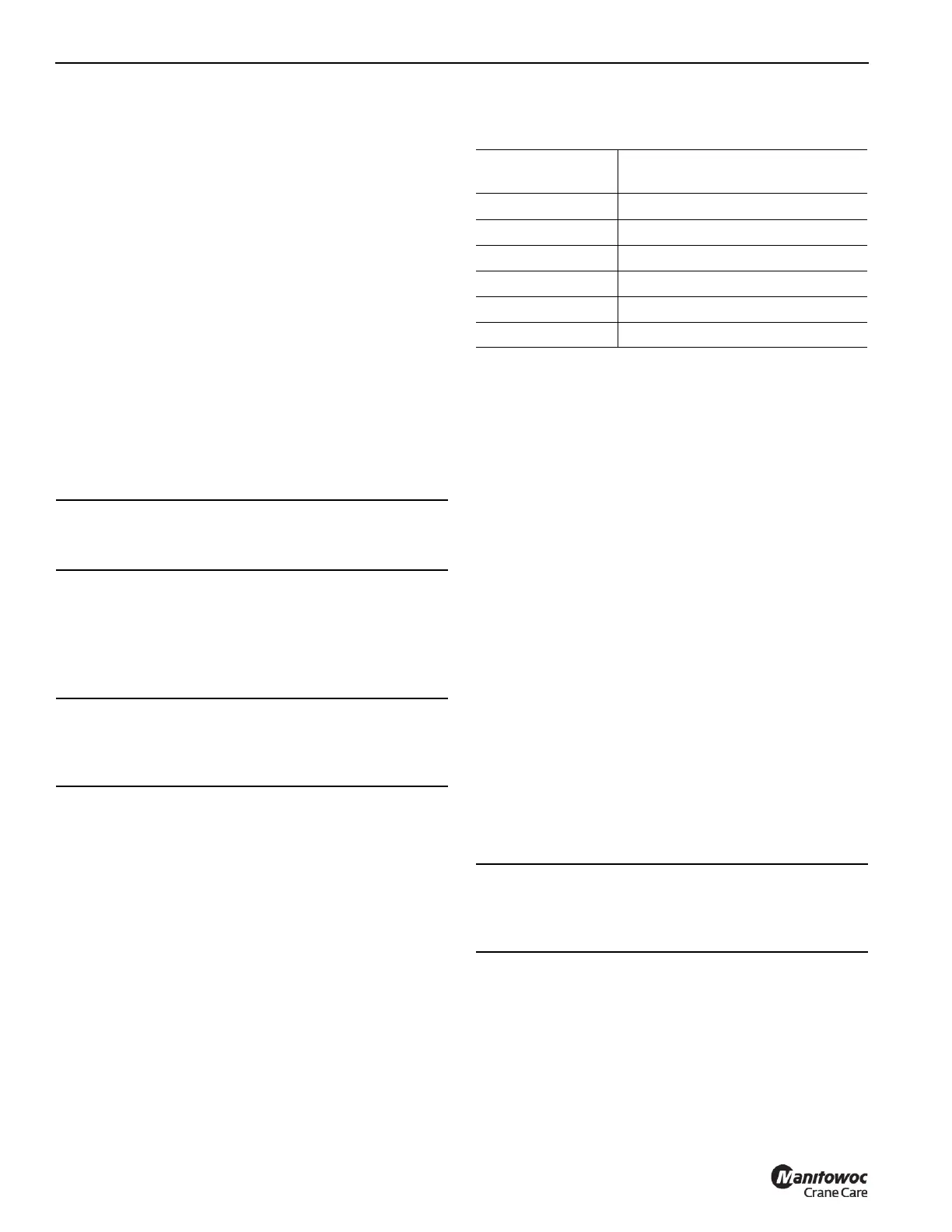